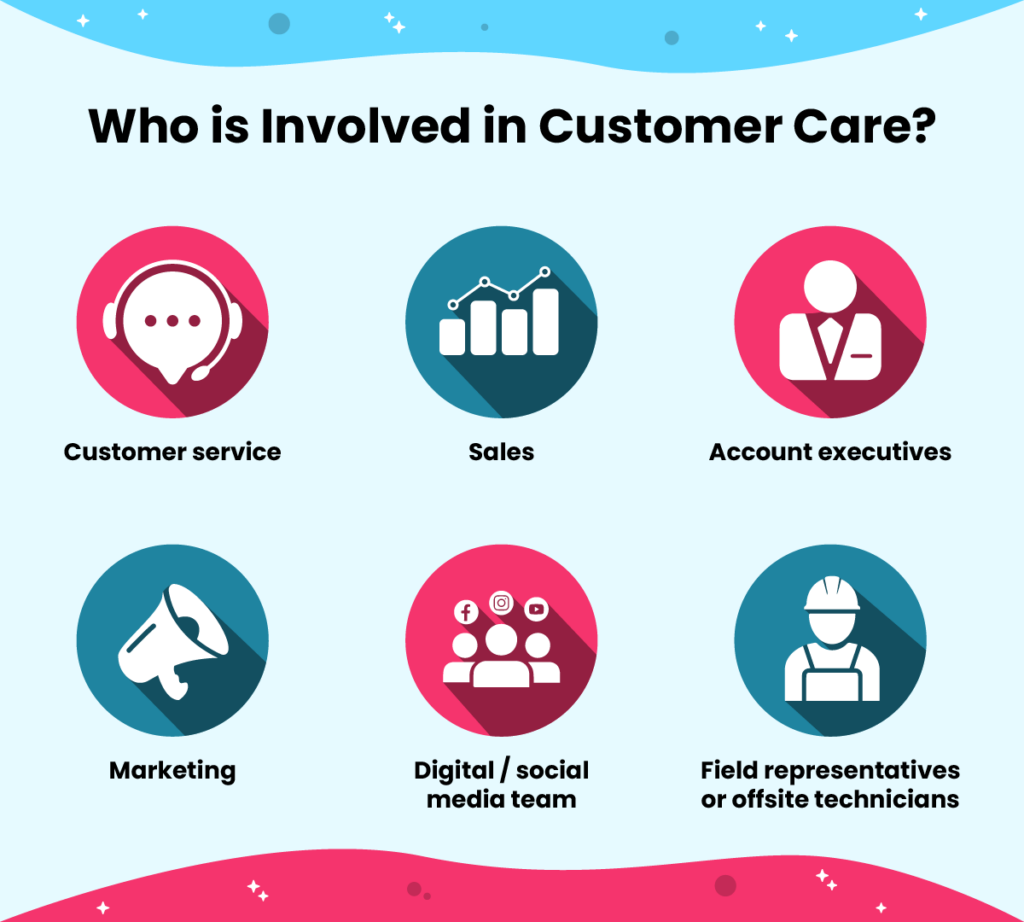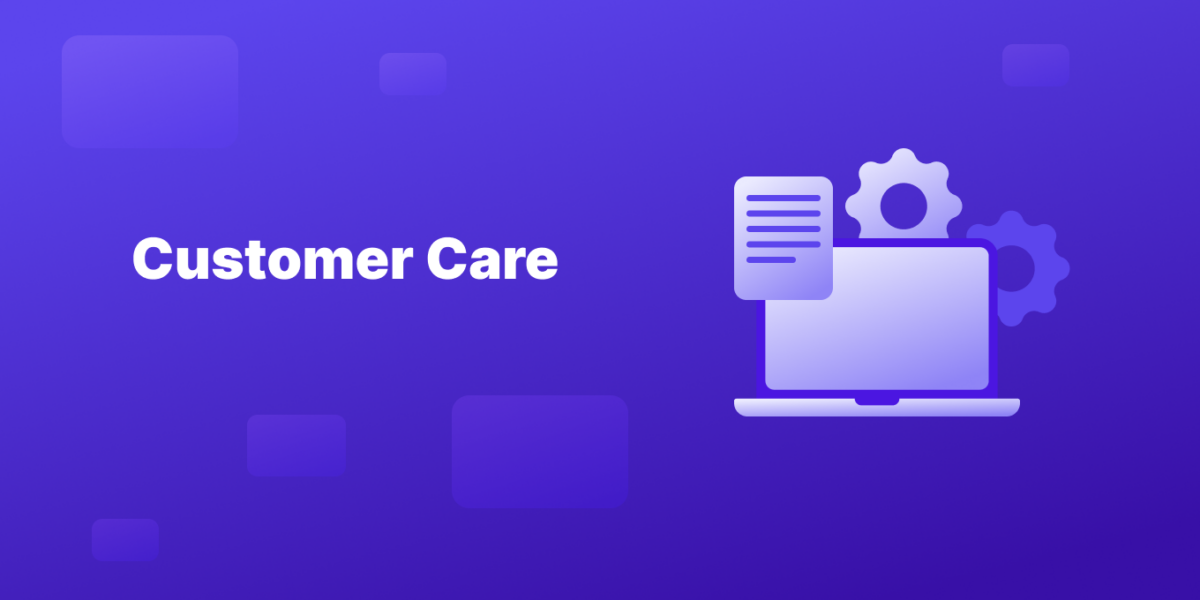According to a study by Invoca, 76% of consumers are likely to stop doing business with a company after just one bad customer service experience.
Customer care is more important to companies now more than ever. In an era of intense competition, customer care can mean the difference between a one-off purchase and lasting customer loyalty.
What Is Customer Care?
Customer care is when businesses treat their customers with courtesy and respect, and establish an emotional connection.
It’s about more than just providing support through the purchase process, or offering aftersales support. Customer care entails meeting emotional needs, which can be the foundation of a lasting relationship that is beneficial to both parties.
- See how Tettra helps customer support teams better manage their internal knowledge
Simply put: customer care is treating customers how they wish to be treated.
Customer care is more than just delivering the services that consumers expect from the business or providing the right technical support. It’s about meeting their emotional needs and fostering relationships. To do so, you must treat customers how they want to be treated. You need to listen to each individual’s needs and find the best solution.
Customer Care vs. Customer Service: What’s the Difference?
Customer service is pretty straightforward: being able to support customers in case of inquiries, issues or problems. Customer service is the domain of the CS team, which specializes in handling troubleshooting and resolution.
On the other hand, customer care is about satisfying emotional needs instead of technical or product-related ones. While customer service takes care of the issue at hand, customer care focuses on the customer’s emotions and feelings: how they are treated, and how they are satisfied emotionally by the brand.
Hence, while customer service belongs to the CS department, customer care is the responsibility of the customer success manager, working hand-in-hand with all customer-facing departments like sales, account executives, and customer service.
Differentiating Customer Care from Customer Experience
Another area that is commonly confused with customer care is customer experience.
Customer experience or CX refers to the customer journey, from the pre-buying process to the post-sales support. It does not necessarily include customer service or customer care.
Customer care comes in the picture when the customer interacts with the business beyond purchasing an item. It is how the customer is treated emotionally during the interaction. While customer experience doesn’t necessarily include customer care, when the customer does interact with the business, good customer care can greatly improve the customer experience.

What Are the Benefits of Customer Care?
Good customer care helps build trust and reputation, reduces churn and liability, and improves the company’s bottom line.
Builds customer trust and brand reputation
While CS deals with product issues, it’s the level of customer care that builds customer trust. By dealing with frustrated concerns with professionalism and empathy, consumers come to view the company as a reliable and trustworthy brand.
This in turn helps build brand reputation, which is the perception that consumers have of the brand. The better the customer care, the more trust and better perception there is for the company.
Reduces churn and builds customer loyalty
Churn is defined as the quantity of customers who abandon the brand. Good customer care reduces the likelihood of a customer switching to a different brand. It also increases the chances of turning them into a loyal customer and boosts their customer lifetime value.
Improves the bottom line
By building a good brand and loyal customer base through good customer care, profits are maximized. In the same manner, being able to reduce churn lowers expenses, while good brand reputation decreases the need for marketing and allows customers to become brand ambassadors on the company’s behalf.
What Are the Elements of Customer Care?
There are several touch points in the customer journey where customer care applies. These include:
In store: when the customer arrives for a physical visit
Field service: when the brand itself comes to the customer, such as their residence
Phone call: when the customer contacts the company’s hotline or mobile number
Chat: when the customer initiates a chat interaction, either with a chatbot or live agent
Forums: this applies to brands that have their own messaging boards or social media groups, where customers can access peer support
Self-help portal: for brands with a customer knowledge base, which allows the customers to resolve issues on their own.
Which Team Should Be Responsible for Customer Care?
Customer care is the responsibility of ALL customer-facing members, whether it’s the door greeter, in-store rep, or even the receptionist.
However, by virtue of their job description these are the teams that require the most training in customer care:

- Customer service
- Sales
- Account executives
- Marketing
- Digital team / social media handlers
- Field representatives or technicians
How to Empower Your Customer Care Team
1. Implement coaching
Take note of customer feedback to pinpoint areas for improvement. A qualified coach can interpret the feedback and guide your teams in a constructive way.
2. Upgrade CS skills
Train customer-facing members in customer service skills. By doing so, you not only improve the quality of both CS and customer care, you also upskills them and minimize the frustration and burden that comes when dealing with complaints or hostile customers.
3. Get a customer success manager
If your organization is sufficiently large, a customer success manager can vastly make a difference in your customer care efforts. The customer success manager specializes in the entire customer journey, from discovery and initial contact all the way to aftersales support. This provides them with a holistic view of the entire process, so that they can collaborate with all the departments involved.
4. Recognize surges
There are times when customer care needs surge in specific areas. For example, an in-store promotion can cause a surge in onsite customer care needs. A digital promo or Black Friday can result in an online surge for your digital or social media team. In the call center industry, the 4th quarter and the ensuing holiday season typically leads to an uptick in hotline calls and concerns, so much so that major contact centers hire seasonal workers for the ‘Ber months.
Recognize when a surge happens to a specific part of your CS team, and be prepared to shift resources. Better yet, anticipate surges before they happen so you can plan resource and personnel allocation in advance.
5. Diversify contact channels
Make sure customers have more than one way to contact you for inquiries or concerns. In the digital age, even two isn’t enough.
Beyond the usual hotline and landline, you need to have at least email and social media presence to respond to online customers. Even better if you can add live chat or at least a chatbot to the mix.
6. Allow customers to help themselves
For smaller businesses without the resources to tap all these channels, there is one way to help the customer without having to man the channel: an external knowledge base.
A self-help portal or FAQ page can go a long way to reducing the burden on your CS team. It also enables customers to solve minor problems on their own immediately, without having to wait in line.
💡Tip
7. Have a rewards program
This applies to both customers AND your own customer care teams.
For customers, you can provide rewards for loyalty, purchase milestones, or simply answering a feedback form. You may be surprised how a little reward can go a long way in improving customer satisfaction.
For your own CC teams, make sure to reward members who top their KPIs. After all, CS teams usually have the most stressful job in the whole organization. Take care of your customer care teams and they will take good care of your customers.
How to Measure Customer Care
To make sure your efforts are on track, there are a variety of metrics you can use to quantify the level of customer care. These include:
Customer satisfaction (CSAT) score
This measures happiness with a product, service, or customer support interaction. It’s normally obtained by asking “How satisfied were you with your experience?” on a 1-10 scale.
CSAT is calculated by taking the sum of all positive responses, divided by the total responses collected, then multiplied by 100. The higher the percentage, the better the customer satisfaction.
Customer Effort Score (CES)
This measures how much effort your customer expended in a transaction or interaction. It can also reflect other things like how much effort was needed to find information or resolve a problem.
CES is collected by surveying customers after the interaction and asking “How easy was it to resolve your inquiry or concern?”
Net Promoter Score℠ (NPS®)
This measures how likely a customer will recommend your product or service to others, usually on a scale of 0-10. This metric determines customer satisfaction, loyalty, and brand perception.
NPS is calculated by subtracting the percentage of customers who answered with a 6 or lower from the percentage of customers who gave a 9 or 10 (known as ‘promoters’).


